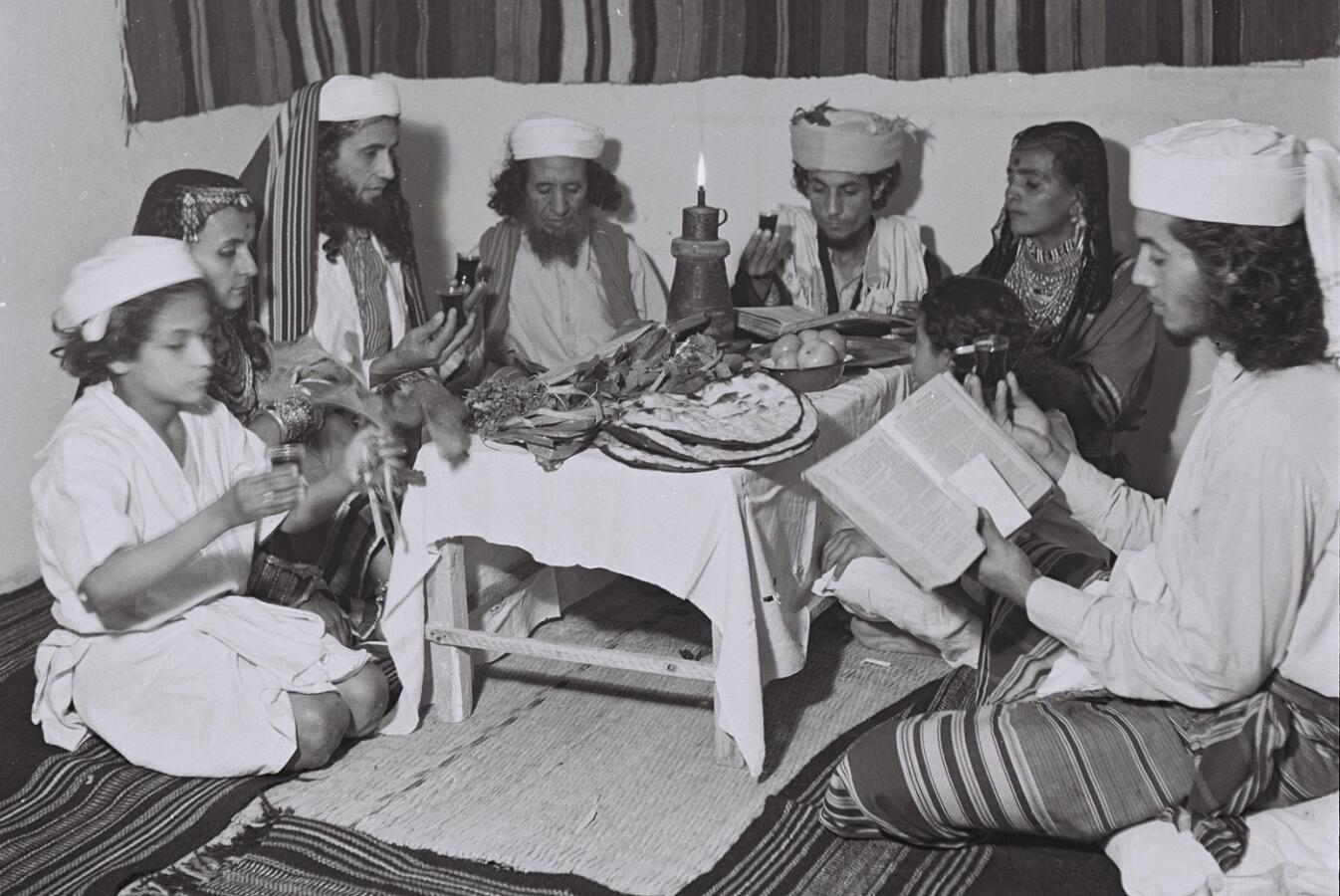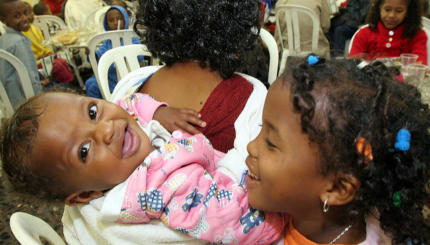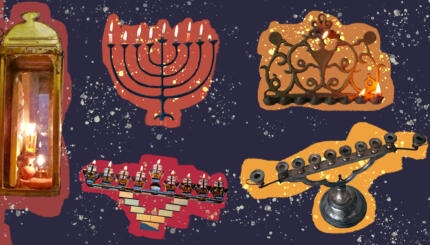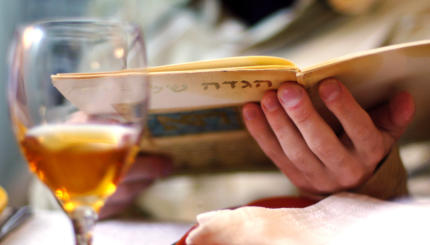For over a thousand years, Jews around the world have used largely the same Hebrew text for the Passover seder. Though there are many different editions of the haggadah, the core text is almost always the same. Similarly, in keeping with the strictures of the Torah and Mishnah, Jews around the world eat many of the same ritual foods, like matzah, maror and haroset.
Within this framework, there is still plenty of room for innovation and customization, especially when seder hosts seek to make the Passover themes of liberation and memory relevant to their own cultures and familial experiences. As a result, Jewish communities around the world have developed a number of unique Passover traditions. Some have become more well-known in recent years, such as the Sephardic tradition of singing Had Gadya in Ladino or Moroccan communities marking the end of Passover with a carb-fueled festive meal called Mimouna. Here are 10 more lesser-known Passover traditions from around the world.
1. Next Level Passover Cleaning
Like most Jewish communities, Kurdish Jews begin preparing for Passover after the end of Purim. However, Passover cleaning traditionally involved washing the bags that held rice, lentils and other legumes — as well as the foods themselves — several times to ensure that no hametz or insects could render the food treif for Passover. Kurdish Jews would also paint their walls in the days before Passover, although the origin of that custom is unclear.
2. A Bloody Hamsa
In Mumbai, India, Jews mimic the Passover lamb’s blood that was smeared across the entrances to Israelite homes in Egypt on the eve of their liberation. The Bene Israel Jews dip their hands in the blood of a sheep or goat. Then, they press their hands to blank pieces of paper and hang the prints above their doorway. The imprint resembles a hamsa, and like the amulet, symbolizes good luck and protection.
With your help, My Jewish Learning can provide endless opportunities for learning, connection and discovery.
3. A Seder Table of Jewels and Gold
In some parts of Hungary and Austria, women at the seder would decorate the table with their jewelry collections, based on this passage from Exodus 3:21-22 in which the escaping Jews are permitted by God to loot the Egyptians who had enslaved them for generations:
And I will dispose the Egyptians favorably toward this people, so that when you go, you will not go away empty-handed. Each woman shall borrow from her neighbor and the lodger in her house objects of silver and gold, and clothing, and you shall put these on your sons and daughters, thus stripping the Egyptians.
Exodus 3:21-22
4. Grass, Candy and Coins from Grandpa
Jews from Turkey recall the wealth that the Israelites brought out of Egypt differently. The patriarch of the family throws grass (symbolizing the Red Sea’s reeds), coins and/or candy for children to collect. While tossing the items, the father or grandfather will also share wishes for a productive year ahead.
5. Retelling through Reenactment
In Góra Kalwaria, the town in Poland that the Ger Hasidic movement originates from, families would pour water on their floor, and then family members would reenact the moment when the Israelites crossed the Red Sea by walking through it. This custom always occurs on the seventh day of Passover, because Jewish tradition says that the seventh day is when the Israelites reached the sea. As they walk through the water, some Jews will name the towns and cities that their ancestors were displaced from in Europe.
Some Romanian Jewish families also recreated scenes from the Exodus by filling a bag or pillowcase with heavy objects and walking around the seder table several times while carrying it, to remember the Israelites leaving Egypt with their belongings on their backs.
6. Pharoah’s Cup
While filling a cup for Elijah — and sometimes for Miriam and/or Ruth — is a familiar ritual at most seders, the Jews of India also fill a cup not for a hero but a villain: Pharaoh. The wine from this cup is then dumped into the glasses of each seder participant, as a snub at the wicked Egyptian king.
7. No Seder Plate Here
Yemenite Jews don’t use a dish for their seder plate. Instead, the entire table is utilized as a seder plate, with the vegetables arranged aesthetically. This lack of a plate likely reflects ancient practice. In the time of the rabbis, food was commonly served on trays that were set on stools to create individual tables for eating.
Jews in Tunisia similarly do not use a plate; instead, the ritual foods that are otherwise found on a seder plate are placed into a reed basket, to evoke Moses being placed in a basket as an infant. The matriarch of the house then takes the reed basket and hovers it over each guest’s head. The matriarch says, “We left Egypt.” The guest replies, “Yesterday, we were slaves. Today, we are free. This year, we are here. Next year, we will be free people in the land of Israel.”
Jewish communities in Morocco recite a similar dialogue; however, Moroccan Jews use a seder plate rather than a reed basket.
8. Passover in Ethiopia
Since Beta Israel Jews did not encounter rabbinic Judaism until the 1900s, Passover celebrations in Ethiopia were derived solely from local customs and the Torah. Ethiopian Jews understood the word hametz to include all fermented foods, and would refrain from consuming yogurt, butter, cheese and any leavened drinks.
Beta Israel would also perform the ritual slaughtering of a Passover lamb and smear its blood above the entrances to their synagogues. In place of haggadot, the Israelites’ oppression and liberation was recounted by reading directly from a sefer Torah.
Today, many Ethiopian Jews — especially in Israel — have adopted rabbinic customs like haggadot and seder plates.
9. Mystical Yachatz
In many Jewish communities that originate in North Africa, breaking the middle matzah (yachatz) takes on a mystical meaning. The matzah is broken to resemble the Hebrew letter “hey,” which has kabbalistic connotations of redemption at the seder. The letter hey was chosen because its numerical value is five and the fifth cup of wine at the seder is poured for Elijah, the prophet that will announce the coming of the messiah.
Some Syrian Jews break the middle matzah to resemble the Hebrew letters “dalet” and “vav.” The numerical values of the letters add up to 10, which can represent the 10 plagues or the 10 sefirot — mystical emanations of God.
10. Scallion Whips
When chanting Dayenu, some Persian and Afghan Jews have the custom of beating each other lightly on the back with scallions or leeks. This tradition symbolizes the whipping that the Israelites endured in Egypt while enslaved.



